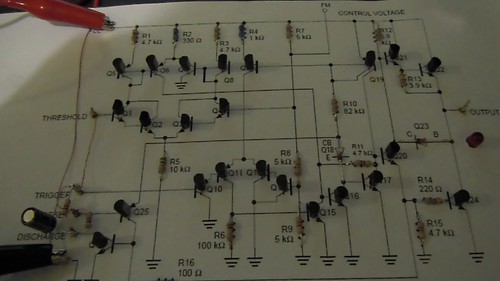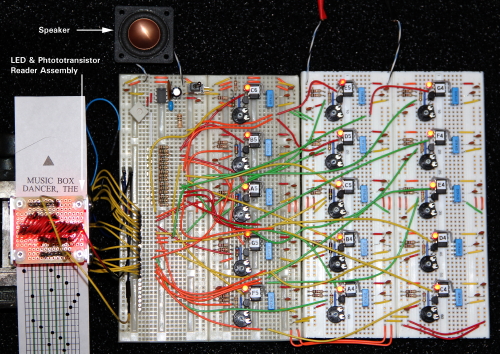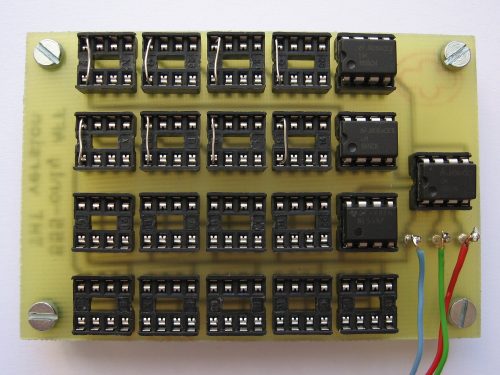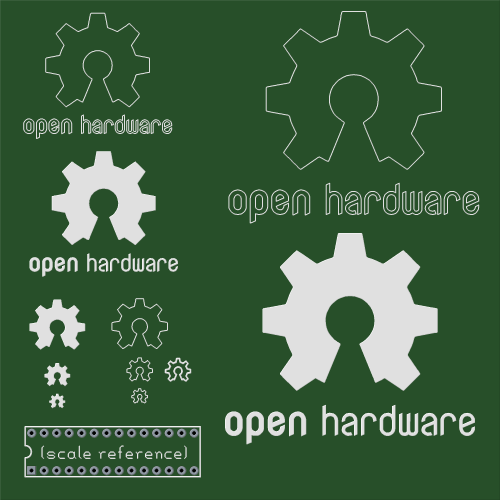Happy Easter! Here’s a round up of some of the amazing things that people have been making with their Egg-Bot Kits.
Reddit Logo Egg by our friend bbum, who also posted about his fun with the Eggbot.




Happy Easter! Here’s a round up of some of the amazing things that people have been making with their Egg-Bot Kits.
Reddit Logo Egg by our friend bbum, who also posted about his fun with the Eggbot.
This spring, we’ve had the honor to help judge the 555 Contest organized by Jeri Ellsworth and Chris Gammell.
Now that the scores have been received from final-round celebrity judges Hans Camenzind and Forrest Mims, Jeri and Chris will be announcing the results of the contest live on uStream, today (Wednesday April 20) at 9 pm EST.To help get you in the mood for the results, here are just a few of our favorites that you may not have seen, in no particular order– hopefully some of these will be amongst the winners!
A beautiful working model of a 555 constructed of discrete components installed in the Encyclopedia of Integrated Circuits.


555 Timer based Music Box Player

Flashus Bulbus, an array of blinking bulbs

555 Adding Machine by Alan Yates

555 AM Radio by Eric Schlaepfer:

This Atari Punk Sequencer just rocks; check out the video.

So that’s just a taste of all the awesomeness from this contest– we hope you’ll tune in
live on uStream, today (Wednesday April 20) at 9 pm EST to see the winners.
It’s National Robotics Week, and for us that means RoboGames!
BarBot 2011 gave us just a taste of what is to come this weekend at the huge international robotics competition in San Mateo. We rounded up some video links of Drink Making Unit 2.0:
Lots of the BarBot partygoers posted photos to flickr too, including a huge set from Spaceman Sam and lots more from ekai, nicolecwong, ninaviss, hackmancoltaire, k0re, shifzr and amyr_81.
We’ll be at RoboGames all weekend, participating in the symposium and selling a few choice kits and components. So get your tickets now! If you’re not in the bay area check the National Robotics Week event listingsto find an event near you.
Photo from BarBot 2011 by Samuel Coniglio.
Conference lanyards are often made of nice sturdy woven webbing. They seem like they ought to have plenty of uses, like replacement shoelaces or camera straps. After enough conferences, they start to look like an awful lot of raw material. Even enough to make a bag.
Lanyards that are sewn or crimped shut at the clip end are used for the horizontal webbing, and determine the overall width of the bag. Leaving the clips at the sides gives the bag a nice rattling sound and keeps the clips from scratching the contents of the bag. The upper clips can be used to hold keys to help keep them from getting lost in your bag.
Breakaway lanyards can be used for the vertical webbing, woven in and out of the continuous lanyards until they reach the top again. Place lanyards with compatible breakaway clips next to each other such that the clips can be connected to the neighbors to finish the top edges.
Make the handles by clipping a few lanyards end to end and then weave them through the middle of the bag afterwards to wrap around from one side to the other.
Alternate ending: omit the handles and clip the breakaway lanyards (vertical webbing pieces) back to themselves and stuff to form a pillow. This bag has proven popular with our feline population, and might be completely irresistible in pillow form.

 Here’s how the logo might look on a printed circuit board, as rendered in gEDA PCB.
Here’s how the logo might look on a printed circuit board, as rendered in gEDA PCB.
 We’ve also rendered it in a few sizes and styles– filled or not, and losing the text as the logos get smaller. You can download this set of examples for gEDA right here ( 82 kB .zip archive).
We’ve also rendered it in a few sizes and styles– filled or not, and losing the text as the logos get smaller. You can download this set of examples for gEDA right here ( 82 kB .zip archive).
We are pleased to help Instructables launch an Egg-Bot Challenge for egg-related projects.
“Make something awesome that is egg inspired. Share your favorite omelet, a picture of your best decorated eggs or your favorite “recipe” for knitted eggs. Anything egg related is eligible.”
You can win some prizes, including a Deluxe Egg-Bot Kit, and we’ll be helping to judge the the finalists. The contest closes on May 1, so start writing up your projects!
Barbot 2011, the cocktail robotics exhibition, is happening on Friday and Saturday nights this weekend– April 1 and 2 –in San Francisco. If you haven’t been to one of these events (and you happen to like both cocktails and robots), let me tell you: you are missing out.
Last year we built the aptly named Drink Making Unit for the event. The Drink Making Unit used three –ahem– food-safe pumps to craft white russians, and was quite a hit at the show– especially amongst people who recognized the pumps.
This year, we’ve designed a brand new bartending machine, Drink Making Unit 2.0, which we are pleased to unveil today, and unleash upon the world this weekend.
Aside from the once-again-apt-but-not-very-descriptive name, Drink Making Unit 2.0 has very little in common with last year’s machine. The mechanism is all new, and features elements borrowed from sources as diverse as pet stores, chemistry labs, and Japanese gardens. It dispenses any six fluids (up from three), in metered and selectable quantities, and also sports an all-new extra-snazzy control panel. Continue reading Drink Making Unit 2.0

The Evil Mad Science ISP Shield is a new open source hardware kit that we’re releasing today.
It lets you use your Arduino (or shield-compatible clone, such as the Diavolino) as an AVR ISP programmer, for example to burn bootloaders onto “raw” AVR chips, directly within the Arduino programming environment, either in the provided ZIF socket or on an external target board. You can read more about this process here.The circuit is designed to be compatible with the “Arduino as ISP” option in recent versions of the Arduino IDE. It is based on a number of prior hardware implementations, most closely the version by Andre Knoerig at Fritzing.
Complete documentation, including assembly instructions, design files, and basic usage information is available on the Evil Mad Science Wiki.